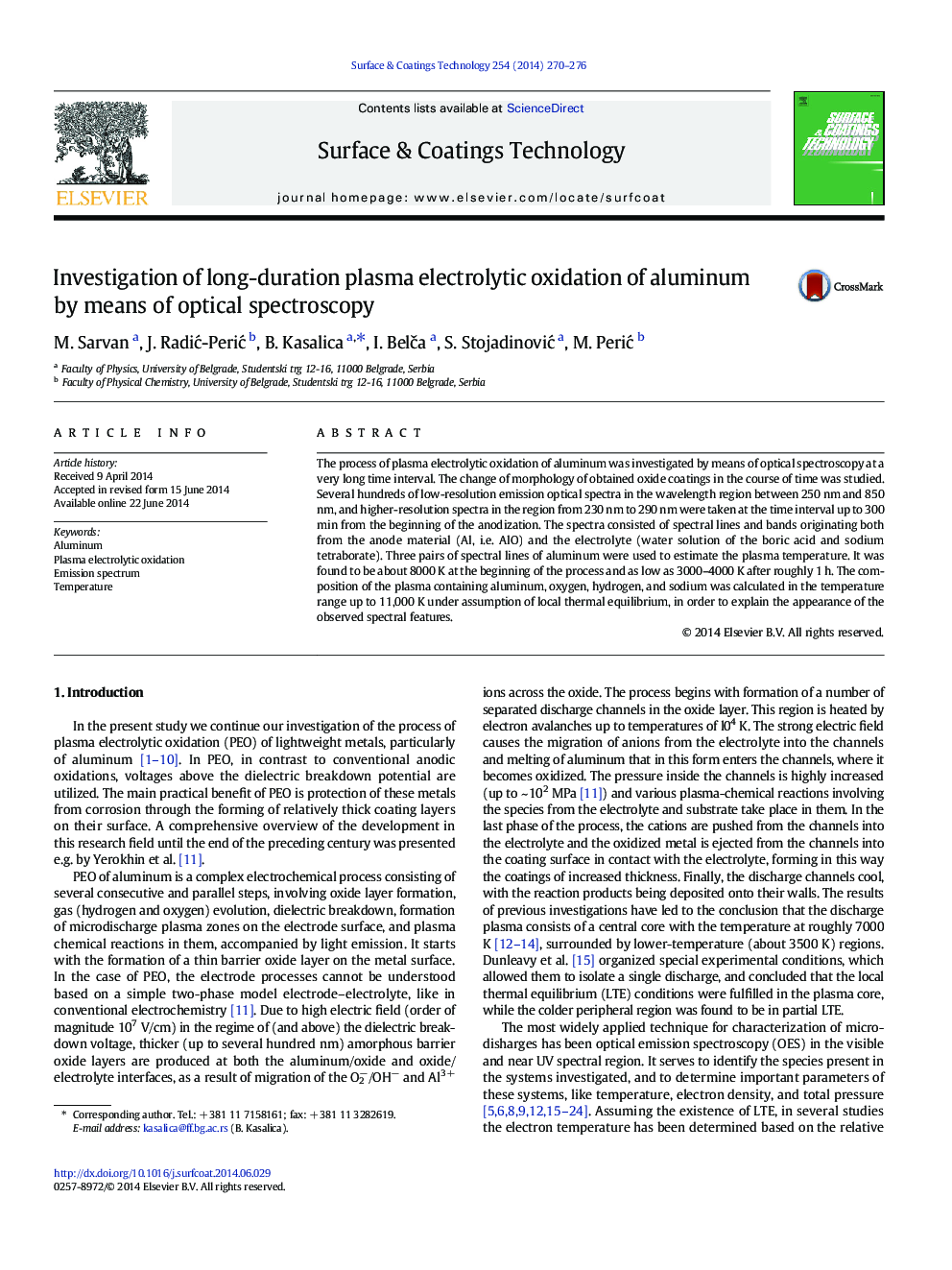| Article ID | Journal | Published Year | Pages | File Type |
|---|---|---|---|---|
| 8027586 | Surface and Coatings Technology | 2014 | 7 Pages |
Abstract
The process of plasma electrolytic oxidation of aluminum was investigated by means of optical spectroscopy at a very long time interval. The change of morphology of obtained oxide coatings in the course of time was studied. Several hundreds of low-resolution emission optical spectra in the wavelength region between 250Â nm and 850Â nm, and higher-resolution spectra in the region from 230Â nm to 290Â nm were taken at the time interval up to 300Â min from the beginning of the anodization. The spectra consisted of spectral lines and bands originating both from the anode material (Al, i.e. AlO) and the electrolyte (water solution of the boric acid and sodium tetraborate). Three pairs of spectral lines of aluminum were used to estimate the plasma temperature. It was found to be about 8000Â K at the beginning of the process and as low as 3000-4000Â K after roughly 1Â h. The composition of the plasma containing aluminum, oxygen, hydrogen, and sodium was calculated in the temperature range up to 11,000Â K under assumption of local thermal equilibrium, in order to explain the appearance of the observed spectral features.
Related Topics
Physical Sciences and Engineering
Materials Science
Nanotechnology
Authors
M. Sarvan, J. RadiÄ-PeriÄ, B. Kasalica, I. BelÄa, S. StojadinoviÄ, M. PeriÄ,
